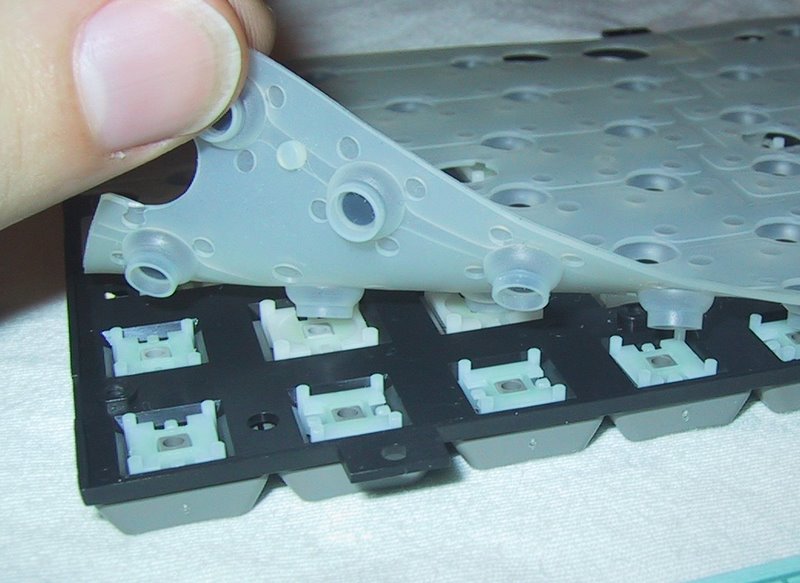The Ultimate Resource on Membrane Switches: Layout, Capability, and Applications
Membrane layer switches act as an intriguing crossway of style and performance, playing a crucial duty in modern interface across numerous industries. This resource unpacks the vital parts that add to their effectiveness, including visuals overlays and circuit traces, while additionally elucidating the mechanisms behind their pressure activation. As we discover the varied applications of membrane layer buttons, it comes to be noticeable that their flexibility and toughness are important in environments varying from healthcare to consumer electronics. Nonetheless, the subtleties of their design and operational concepts may disclose also much deeper insights worth taking into consideration.

Comprehending Membrane Switches
Membrane layer switches are a kind of interface innovation widely utilized in various electronic tools, defined by their thin, versatile layout and functionality. These buttons are composed of multiple layers that include visuals overlays, glue layers, and circuitry, allowing a efficient and portable user interface for users. They can be discovered in home appliances, clinical tools, and commercial control panels, providing a dependable method for user interaction.
One of the key benefits of membrane buttons is their capability to resist contaminants such as dust and dampness, making them suitable for atmospheres where longevity is vital. Their inconspicuous layout permits smooth integration right into different applications, while the customizable graphic overlays improve customer experience by providing clear aesthetic feedback. Furthermore, membrane buttons can suit a selection of innovations, such as tactile responses and backlighting, additional improving their functionality.
The production process for membrane switches commonly entails screen printing, lamination, and die-cutting methods, ensuring accuracy and consistency in manufacturing. On the whole, membrane switches stand for a reliable and flexible remedy for modern digital devices, incorporating capability with visual allure in customer interface design.
Key Elements and Design Elements
A variety of key parts and design elements collaborated to produce an effective membrane button. At the core, the visuals overlay serves both useful and aesthetic objectives, supplying an easy to use user interface while shielding inner parts from ecological factors. The option of materials, typically polyester or polycarbonate, affects sturdiness and responsive responses.
Under the overlay, the glue layer ensures the switch sticks securely to the substrate, which can be metal, glass, or plastic. The spacer layer is crucial, as it keeps the essential gap between the circuit and the overlay layers, permitting effective actuation. Membrane Switches. Circuit traces, usually made from conductive ink or adhesive, are printed on a flexible substrate, allowing electric signals to be transmitted when stress is applied
Design considerations additionally include the setup of tactile domes or embossing that supply physical responses to the customer, boosting the total experience. Additionally, the design and spacing of the buttons have to be enhanced for simplicity of use, making certain that individuals can navigate the interface intuitively. Overall, these elements and style components work synergistically to create a reputable, practical membrane layer switch customized to certain applications.
Performance and Procedure Mechanism
At the heart of effective functionality for membrane layer switches exists their functional device, which facilitates user communication via an easy yet effective layout. These switches operate the concept of pressure activation, where a user applies force to a marked area of the button (Membrane Switches). This activity presses the layers of the switch, completing an electric circuit that sends a signal to the connected gadget
The building and construction usually includes a top graphic layer, a glue spacer layer, and a lower circuit layer, which collectively develop a durable interface. When stress is applied, the leading layer falls down against the bottom circuit layer, allowing conductive traces to connect. This style not just enables clear tactile feedback yet also makes certain sturdiness and dependability, as the buttons are frequently resistant to dirt and wetness.
Furthermore, the flexibility of membrane switches permits assimilation with numerous technologies, including LED indicators and microcontrollers, improving their functionality. By supplying a structured user interface that decreases mechanical wear, membrane changes continue to be a popular choice in applications ranging from consumer electronic devices to industrial devices, making certain ideal efficiency and individual fulfillment across varied environments.
Kinds Of Membrane Layer Switches

An additional substantial group is lit up membrane switches, which integrate backlighting to improve visibility in low-light problems. These switches are commonly utilized in control panels and dashboards where clear presence is vital.
Furthermore, there are customized membrane switches over made to fulfill particular dimensional, graphical, and functional demands. These modifications can include distinct shapes, shades, and designs, enabling for smooth assimilation right into various gadgets.

Applications Throughout Various Industries
Just how do membrane layer buttons boost functionality throughout diverse industries? In the medical industry, membrane switches play a critical function in tools such as analysis tools my sources and individual tracking systems, where dependability and convenience of cleaning are extremely important.
In the automotive sector, membrane switches are generally made use of in dashboards and control board, providing intuitive controls that boost driver security and comfort. The consumer electronics market additionally benefits from their personalized and light-weight features, enabling smooth designs for smartphones and home appliances.
Furthermore, membrane switches locate applications in commercial automation, where they add to reliable equipment procedure and surveillance systems. Their resistance to dirt and moisture makes original site sure performance popular conditions (Membrane Switches). Additionally, the food and drink market utilizes membrane switches for tools control, where health and durability are essential
Conclusion
Finally, membrane layer switches represent an essential innovation in user interface innovation, characterized by their special layout and capability. Their key components, consisting of visuals overlays and circuit traces, add to their functional efficiency via stress activation. The adaptability of membrane layer switches promotes their application throughout varied sectors, from clinical tools to consumer electronic devices. This thorough understanding reinforces the importance of membrane layer buttons in enhancing product functionality and durability in modern technological settings.
Membrane changes serve as an intriguing junction of design and performance, playing a crucial function in modern customer interfaces across numerous fields.Membrane layer switches are a kind of user interface technology widely made use helpful hints of in various electronic devices, identified by their thin, versatile style and performance.At the heart of effective performance for membrane switches over lies their functional device, which assists in individual communication via a basic yet effective style. These buttons operate on the concept of pressure activation, where an individual uses force to a marked location of the button.In conclusion, membrane changes stand for an important development in individual interface technology, characterized by their unique style and capability.
 Andrew Keegan Then & Now!
Andrew Keegan Then & Now! Lucy Lawless Then & Now!
Lucy Lawless Then & Now! McKayla Maroney Then & Now!
McKayla Maroney Then & Now! Naomi Grossman Then & Now!
Naomi Grossman Then & Now! The Olsen Twins Then & Now!
The Olsen Twins Then & Now!